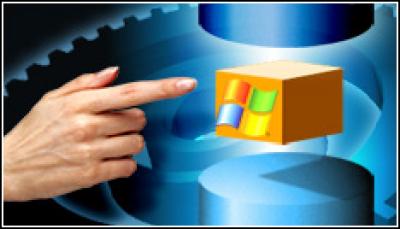Server Virtualisation To Remain ‘Sluggish’ in 2010

Adoption of server virtualisation is likely to remain steady in 2010, unless innovative virtualisation products from VMware and Microsoft start to bear fruit
Gartner says that workloads running on virtual machines will increase significantly in 2010. I’m not so sure. I think that most industries are already highly efficient, and efficiency is really the raison d’être for server virtualisation. I predict that server virtualisation will hold steady – if not be sluggish – next year.
As reported by my eWEEK news colleague Jeffrey Burt, Gartner analysts at the Gartner Symposium/ITxpo in October released a survey that said, “Only 16 percent of current IT workloads are running on virtual machines. However, that’s expected to increase to 50 percent by the end of 2012, and use of VMs will grow most quickly among small and midsize businesses.”
There were important virtualisation developments in 2009 that may account for the Gartner survey results and that also counter my “sluggish adoption” theory.
Intel and AMD created new server processors that were important hardware advancements for virtualisation. The two companies also recently settled a lawsuit that will likely smooth server virtualisation deployments: It’s possible that in the not-too-distant future, IT managers won’t have to make a choice between AMD and Intel to get the advanced high-performance features offered by hypervisor platforms. And VMware, Microsoft and a host of open-source-based hypervisor platforms released important new versions of their wares.

The big hardware change in 2009 was Intel’s shipment of the Xeon 5500 family of Nehalem processors. AMD Opteron processors have had Hypertransport and a more direct memory controller for years. Similar capabilities were released in the Intel Nehalem processors that make servers based on this technology significantly more friendly to virtualisation tools and also much more energy-efficient.
And the beefed-up, power-conserving capabilities built into the Intel Xeon 5500 processors put the Nehalem family at the centre of two of the most important virtualisation advances of the year: VMware’s vSphere 4 and Cisco’s Unified Computing System.
Backing my theory is the IDC Worldwide Quarterly Server Tracker, which showed that both shipments and revenues for x86-based servers fell sharply in 2009. Economic instability was the main reason cited for the decline. Server virtualisation was also mentioned as a possible reason, with some IT managers saying they had delayed server spending in anticipation of buying AMD Instanbul (basically a six-core Shanghai-class Opteron processor) and Nehalem-equipped server hardware. But this was only an “also ran” reason for the overall slowdown in server shipments.
I could be proved wrong – and would be happy if I were – if two big releases this year bear fruit next year: VMware’s vSphere 4 and Microsoft’s Windows Server 2008 R2 with Hyper-V.
VMware products are widely deployed, and the benefits that vSphere brings are compelling enough to warrant consideration in any VMware (or other) shop. And Microsoft’s Hyper-V release in Windows Server 2008 R2 is nothing to sniff at. For organisations that can use the included virtualisation capability provided by Microsoft’s operating system, there is every reason to believe that more server virtualisation projects will be attempted in 2010.
Virtualisation for almost all application workloads is inevitable. Some of that will happen in the cloud, especially as gloomy business conditions make stable, predictable (and never-ending) cloud rental options appealing. Some will happen on virtual machines hosted in your own data centre.
I’m interested to see if the inexorable drive for efficiency will be as intense as predicted, especially in a year in which we will be recovering from one of the worst recessions in recent history.